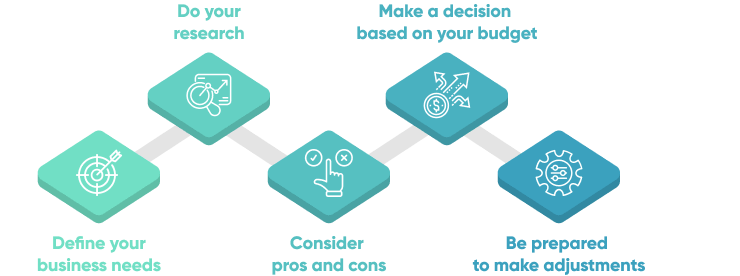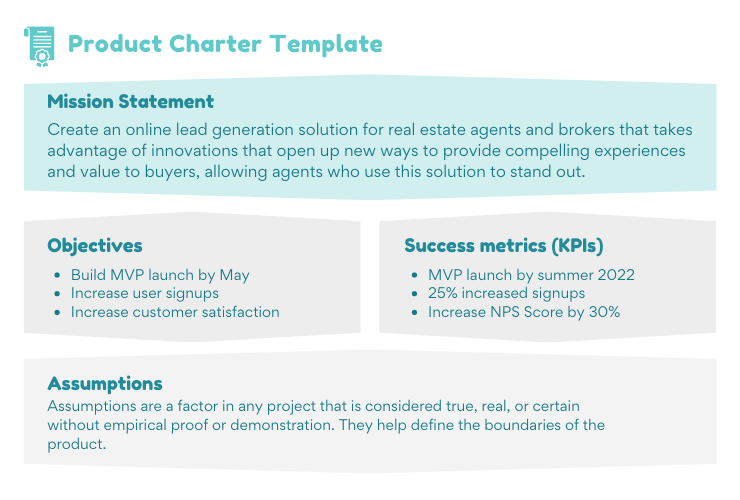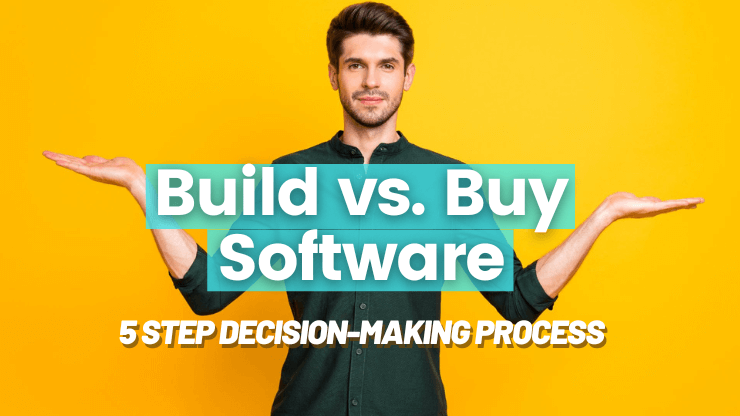The debate of build vs. buy software is far from new. Since the beginning of digital transformation processes, it has been clear that a personalised approach is key to user satisfaction. This is no longer a desirable feature, but an absolute must-have if you wish to keep up with your competitors.
Nevertheless, software vendors have not lagged behind, and today there are a huge number of software solutions that can be useful for various companies. Many companies make their choice in favour of purchasing software from vendors. However, it remains obvious that such a solution is not able to solve many of the unique problems that companies face.
Given such a large number of different factors, it becomes obvious that it is impossible to give a clear answer to the build vs buy software question. In this article, we tried to compare both options and explain under what circumstances it is recommended to use each of them. Although this material is still not a direct guide to action, we believe that it can be useful for those who are faced with this dilemma.
Why do companies need software?
In the business world, time is money. Companies need software to save time on tasks that can be automated, such as data entry, accounting, and customer relationship management. In addition, software solution can help companies keep track of their inventory, customers, and sales. By using software, businesses can operate more efficiently and effectively.
To save time on tasks that can be automated
Software can automate tasks that would otherwise take up valuable time, such as data entry and accounting. This can free up employees to focus on more important tasks and improve efficiency.
To keep track of inventory, customers, and sales
Software can help businesses keep track of inventory, customers, and sales. This information can be used to make decisions about stock levels, marketing campaigns, and more.
To operate more efficiently
By using software, businesses can operate more efficiently. This can lead to increased productivity and profitability.
To improve communication and collaboration
Software can improve communication and collaboration within a company. This can be helpful for team projects and brainstorming sessions.
To make better use of data and analytics
Software can make it easier to collect and analyze data. This information can be used to improve decision-making, understand customer behavior, and more.
Building software in-house

Insourcing means you allocate a project to your internal IT teams. Insourcing can require reallocating employees from another project, leading to teams reorganization. When you don't have enough resources internally, insourcing requires recruiting new employees.
The leading reasons for insourcing are:
- To gain control over decision-making and the ability to move more quickly and precisely.
- To get the optimal balance of in-house and outsourced services in accordance with current business objectives, i.e. providing a platform to nurture talent.
- Mergers and acquisitions integration plan can include a new sourcing strategy or develop custom software solutions.
Pros
- Greater agility and flexibility. you decide on their compensation and timetable. You'll know their availability and talents.
- Control of critical functions and skillsets. As the firm expands, the internal staff's expertise can be transferred. Having great coders on your team may really set you apart.
- Collaboration and knowledge sharing Working in the same workplace promotes communication and skill sharing. Every day, decisions may be taken swiftly and proactively.
Cons
- Recruiting and training new staff is expensive and requires time. In order to hire the best developer, recruiters must have technical expertise and may even perform practical testing.
- Less flexibility over costs. If the demand for resources is temporary, insourced staff are often hired on less flexible contracts, and it's not always possible or ethical to reduce insourced resourcing spend in the short to mid-term.
Buying software outside the company
Off the shelf software means you are contracting a certain project or an entire business task to an external service provider that specializes in the service. Different problems require different software outsourcing models.
The leading reasons for outsourcing are:
- Gain access to specific skills and knowledge. Software development partners have specialized knowledge and trained talents that are unavailable inside your own organization.
- Flexible team capacity and scalability. You can staff up projects to meet important deadlines without the financial commitment of hiring in-house employees. After you’ve delivered a project, you can easily switch back to an entirely in-house team.
- Maintain focus. Purchased software development in general or required project skills and knowledge might not be your company focus. In that case, it's better to focus on your core competencies and bring in talent as you need it.
Pros
- Reduces the recruitment time. With outsourcing, the entire task of recruiting falls on the outsourcing company. Your team can be ready in a few days.
- Access to a talented pool of experts and possibilities to custom software development. Outsourcing enables you to select from a global talent pool of remote software developers. It means you can collaborate with experts from any part of the globe.
- Enhanced flexibility and scalability. You can easily scale up and down your team by leveraging the outsourcing partner talent pool.
- Quality on a budget. IT service providers in low-cost labour countries provide services that result in savings.
Cons
- Lack of control and insight. When you outsource projects you’re losing control of how those tasks are being performed.
- Communication issues. Regardless if you’re delegating work via emails or teleconferences, important instructions are often lost in translation. Communication gaps may emerge that need to be filled with more documentation.
- Impact On Company Culture. By hiring a number of external team members, or even whole teams at a time.
- Security risks. If you plan to outsource processes that involve critical business data, you must ensure the outsourcing partner will meet high-security standards.
Build vs Buy Software - 5-Step Decision-Making Process
In order to fully realise the impact of a new product on an enterprise, it is important to consider the end goal of the product. If the goal is to address a standard business workflow, then the enterprise needs to offer a healthy blend of products that account for both. However, if the goal is to distinguish the organisation with a niche offering, the enterprise may only need to offer products that account for the niche. Below we have discussed some relevant factors you should take into concern.

Define your business needs
A product charter is crucial for outlining software business requirements. It should be used to determine the advantages and risks of implementing new software, as well as the investment's technical capability, feasibility, and overall portfolio priority.
Analyze then portfolio priorities. Focus on the commercial value and complexity of implementation. Rank the efforts from greatest to lowest value, taking into account their level of complexity and risk.
Finally, success measures for the opportunity should be created. Choosing the appropriate KPIs to measure during the planning and implementation phases considerably improves the likelihood of success. Expect a progressive movement toward targeted results over the implementation's duration. The shorter the cycles between measurements, the greater the probability that the project will be successful.

Do your research
There are a few things to keep in mind when researching software solutions in the context of build vs buy:
Consider the unique processes, design, affected systems, departments, user roles, and workflows that will be involved in each option. Build will likely require more customization and may be a better fit for organisations with specific needs that off-the-shelf solutions can't meet. Buy may be a better option for organisations that want a ready-made solution and don't have the resources or expertise to build their own.
Research the costs and benefits of both options. Build will likely require more upfront investment, but may provide more long-term benefits. Buy may be less expensive in the short-term, but may not offer the same flexibility or scalability as a custom solution.
Weigh the risks and rewards of each option. Build carries more risk because it requires more investment and expertise, but it also offers more potential rewards. Buy is less risky, but may not provide the same level of customization or control. Ultimately, the business decision of whether to build or buy software solutions depends on the specific needs of the organisation.
Top 13 Software Development Risks & How to Avoid Them
10 Powerful Techniques for Better Agile Requirements Gathering
Consider the pros and cons of each option
There are pros and cons to both building and buying software. Investigating existing product offerings is the most logical starting point. The software is already built and ready for use. Compile a detailed analysis of the solutions, feature sets, and pricing. This information provides insight into the landscape and capabilities pertaining to the objectives framed in the organisation’s product charter. Explore the past and future roadmaps to spot shortcomings or opportunities for additional features to drive revenue for your company. Being aware of a products’ evolution helps inform an enterprise’s roadmap.
Consider products that meet a need or process. Case strategy Buying industry-focused tools like competitors: safer and faster path to value or risk of mirroring inefficiencies? Something transformative or industry-specific? Origin and use cases may match the charter. Richer features and workflow alignment are common in industry-specific apps. Relativity. Relativity helps legal teams with litigation, investigations, and compliance. Third-party integration enables custom workflows. The product is customizable and industry-specific. Adding a new tool that changes processes or behaviours is inefficient. Salesforce illustrates. The infinitely customizable product spans many industries. Poor Salesforce implementation reduces usability, requires extensive customization, and affects IT ecosystem. What seems cheap becomes time-consuming to implement.

In general, building software is more expensive and time-consuming than buying software. However, building software gives you the opportunity to create a custom solution that is tailored to your specific needs. Buy software can be faster and less expensive, but you may have to compromise on features and flexibility.
8 Powerful Methods for Better Requirements Elicitation
10 Software ROI Factors You Should Measure & Improve
Make a decision based on your budget
Budget is often one of the key deciding factors when it comes to whether to build or buy software. If you have the budget to buy software, then it may be the better option as you will have access to a wider range of features and support. However, if you are on a tight budget, then you may need to consider building a software.
When making a decision based on budget, it is important to consider the long-term costs. Outsourcing software may have a higher upfront cost, but it may be cheaper in the long run as you will not need to pay for ongoing development and support. Building software in-house will often have a lower upfront cost, but you will need to factor in the cost of ongoing development and support.
It is also important to consider what your business needs. If you need a very specific piece of software that is not available off-the-shelf, then you may need to build it yourself. However, if you just need a basic piece of software, then buying an off-the-shelf solution may be the better option.
Consider the pros and cons of each option and make a decision based on your budget and your business needs.
Be prepared to make adjustments as your needs change
As your business needs change, you may find that the software you originally chose to either build or buy no longer meets those needs. In that case, it's important to be prepared to make adjustments to your decision in order to continue to get the most out of your software.
For example, if you originally decide to buy the software but find that it doesn't have all the features you need, you may need to consider building your own software or finding a different software product that better meets your needs. On the other hand, if you originally decide to build software but find that it's taking too much time and resources to maintain, you may need to consider buying a software product that already exists.
No matter what your original decision was, it's important to be prepared to make changes as your needs change in order to ensure that you're always getting the most out of your software.
Conclusion
There is no one-size-fits-all answer to the question of whether to build or buy software for your business. The decision depends on a number of factors, including the unique processes, design, affected systems, departments, user roles, and workflows within your organisation. By evaluate relevant factors are necessary to determine what is better for your business.
In general, businesses should build software when they have specific, unique needs that cannot be met by off-the-shelf products.
If you want to scope out what it would look like to build a custom software solution, at SoftKraft we offer business software development services to help teams optimize their business processes and accelerate business growth.
Get a free quote for your project!

